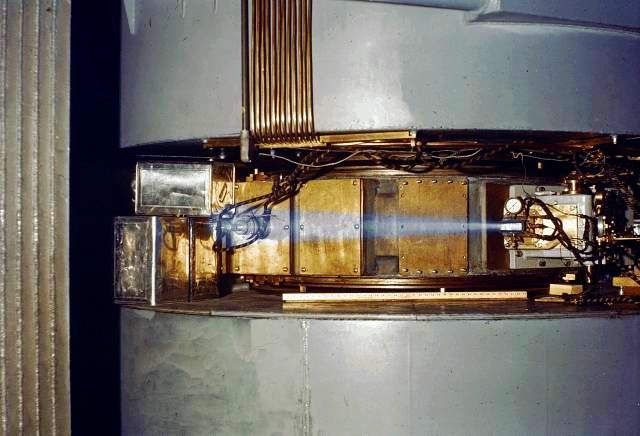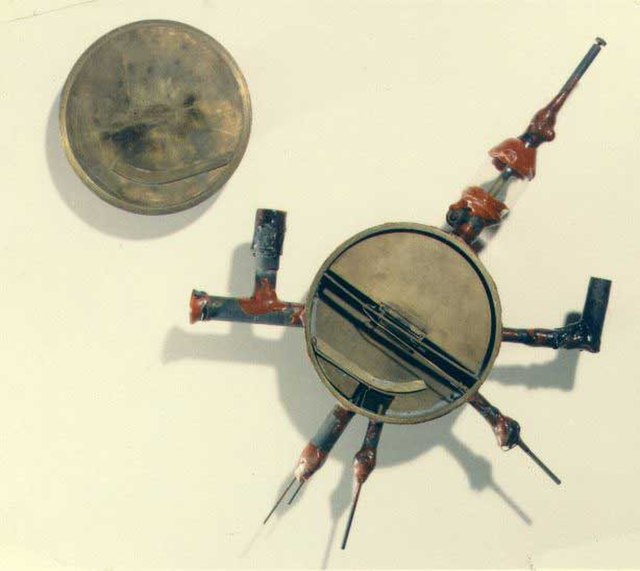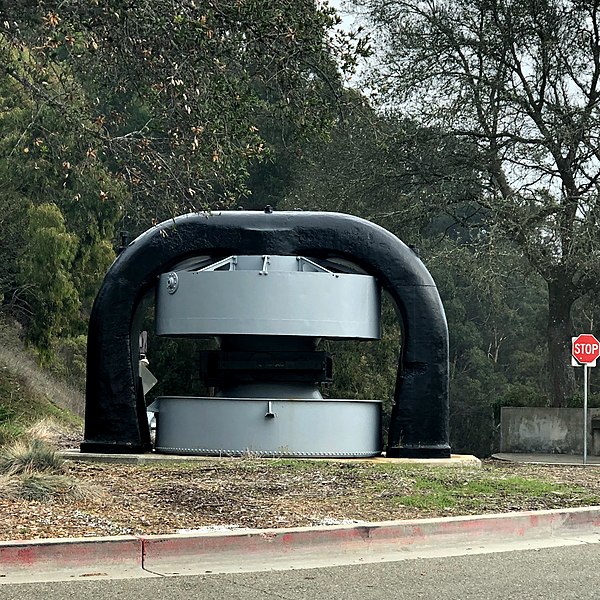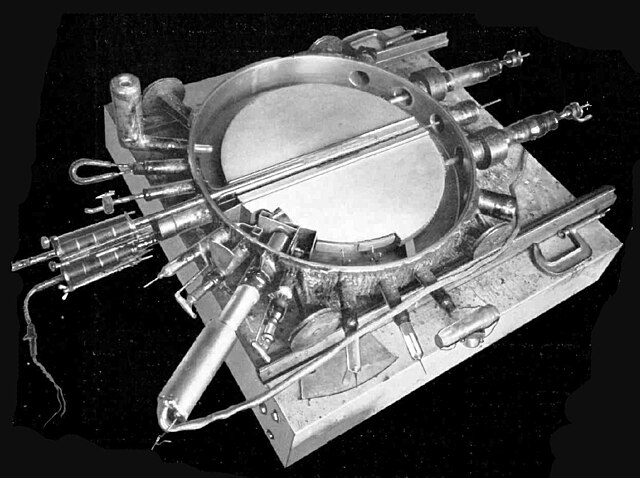A synchrocyclotron is a special type of cyclotron, patented by Edwin McMillan in 1952, in which the frequency of the driving RF electric field is varied to compensate for relativistic effects as the particles' velocity begins to approach the speed of light. This is in contrast to the classical cyclotron, where this frequency is constant.
A part of the former Orsay synchrocyclotron
The Synchrocyclotron (SC) at CERN
A cyclotron is a type of particle accelerator invented by Ernest Lawrence in 1929–1930 at the University of California, Berkeley, and patented in 1932. A cyclotron accelerates charged particles outwards from the center of a flat cylindrical vacuum chamber along a spiral path. The particles are held to a spiral trajectory by a static magnetic field and accelerated by a rapidly varying electric field. Lawrence was awarded the 1939 Nobel Prize in Physics for this invention.
Lawrence's 60-inch (152 cm) cyclotron, c. 1939, showing the beam of accelerated ions (likely protons or deuterons) exiting the machine and ionizing the surrounding air causing a blue glow
Lawrence's original 4.5-inch (11 cm) cyclotron
The magnet yoke for the 37-inch (94 cm) cyclotron on the grounds of the Lawrence Hall of Science, Berkeley, California
Vacuum chamber of Lawrence 69 cm (27 in) 1932 cyclotron with cover removed, showing the dees. The 13,000 V RF accelerating potential at about 27 MHz is applied to the dees by the two feedlines visible at top right. The beam emerges from the dees and strikes the target in the chamber at bottom.






